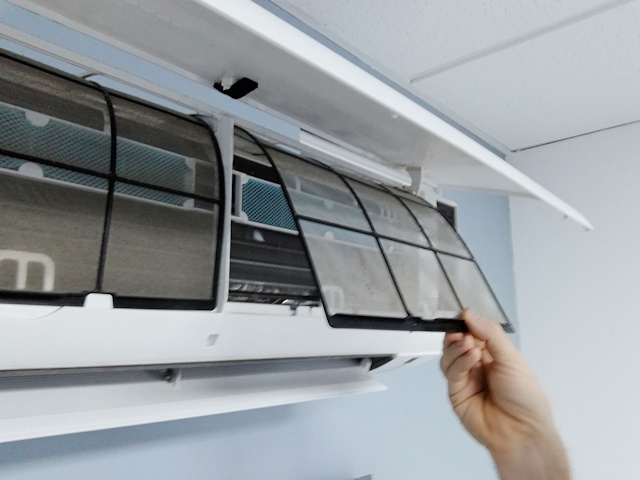Humidity in Air Conditioning

As the temperatures rise during the sweltering summer months, air conditioning becomes a lifeline to maintaining indoor comfort. However, it’s not just the temperature that affects your comfort; humidity plays a significant role as well. Understanding the impact of humidity on your air conditioning system and indoor comfort is essential to creating a pleasant living environment. In this blog post, we’ll explore how humidity affects your air conditioning and share tips on achieving ideal indoor comfort.
The Basics of Humidity
Humidity refers to the amount of moisture or water vapor present in the air. It’s typically measured as a percentage and can vary significantly depending on your geographical location and the time of year. High humidity levels mean that the air contains a lot of moisture, while low humidity indicates dry air.
The Impact of High Humidity on Comfort
High humidity can make a hot day feel even more uncomfortable. When the air is saturated with moisture, your body’s natural cooling mechanism, sweat evaporation, becomes less effective. As a result, you feel hotter and stickier, which can lead to discomfort and even heat-related health issues.
The Role of Your Air Conditioner
Your air conditioner not only cools the air but also plays a crucial role in regulating indoor humidity. When the warm indoor air is drawn into the AC system, it passes over coils filled with refrigerant. As the air cools, moisture in the form of condensation collects on these coils and is drained away, reducing indoor humidity levels.

How Air Conditioners Control Humidity
Air conditioning systems are designed to remove excess humidity from the air as they cool it. This process occurs in three main stages:
- Cooling: The warm indoor air is drawn into the AC unit, where it passes over the evaporator coils. These coils contain the refrigerant, which absorbs heat from the air, cooling it in the process.
- Dehumidifying: As the warm air is cooled, moisture in the air condenses into water droplets on the evaporator coils. This water is collected and drained away from the system.
- Heating: After cooling and dehumidifying the air, the AC unit reheats it slightly before circulating it back into your home. This ensures that the air is not overly dry, which can be uncomfortable and cause other issues, such as static electricity.
The Ideal Humidity Level
Achieving ideal indoor comfort involves maintaining the right balance of temperature and humidity. According to the American Society of Heating, Refrigerating, and Air Conditioning Engineers (ASHRAE), the recommended indoor relative humidity level is between 30% and 60%. This range provides the most comfortable living environment and helps prevent issues associated with high or low humidity.
The Impact of Low Humidity
While high humidity can be uncomfortable, low humidity is not without its problems. In dry conditions, moisture is continually being pulled from your skin and respiratory system, which can lead to:
- Dry skin and eyes
- Irritated respiratory passages
- Increased susceptibility to colds and respiratory infections
- Increased static electricity
- Cracked wooden furniture and flooring
Balancing Humidity and Comfort
To achieve ideal indoor comfort, you can take several steps to balance humidity levels in your home:
- Use a Humidifier: In dry conditions, using a humidifier can add moisture to the air, making it more comfortable and preventing some of the issues associated with low humidity.
- Use a Dehumidifier: If you live in a humid climate, a dehumidifier can help remove excess moisture from the air, preventing discomfort and inhibiting mold growth.
- Regular Maintenance: Ensure that your air conditioning system is well-maintained. Dirty coils or clogged drainage systems can hinder your AC’s ability to control humidity effectively.
- Proper Sizing: Make sure your air conditioner is appropriately sized for your home. An oversized AC unit may cool the air too quickly, resulting in inadequate dehumidification.
- Seal Leaks: Inspect your home for air leaks and seal them to prevent humid outdoor air from infiltrating your living spaces.
- Ventilation: Use exhaust fans in bathrooms and kitchens to remove humid air from these areas. Additionally, consider investing in an energy recovery ventilator (ERV) to exchange indoor and outdoor air, improving ventilation and comfort.
Conclusion
Achieving ideal indoor comfort involves more than just setting your thermostat to a specific temperature. Understanding the impact of humidity on your air conditioning system and comfort is crucial. Whether you’re dealing with high humidity in the summer or low humidity in the winter, taking steps to balance indoor humidity levels can significantly improve your living environment. Regular maintenance of your air conditioning system with this service www.hi-techplumbingandair.com/heating/, proper sizing, and the use of additional equipment like humidifiers or dehumidifiers can all contribute to achieving the perfect balance of temperature and humidity for your home. By doing so, you’ll create a more comfortable and healthier living space for you and your family.
